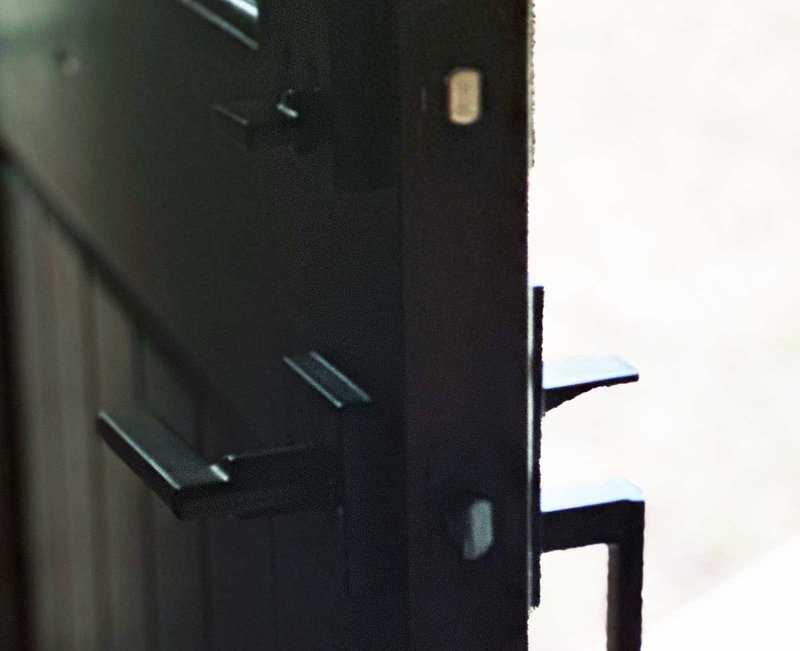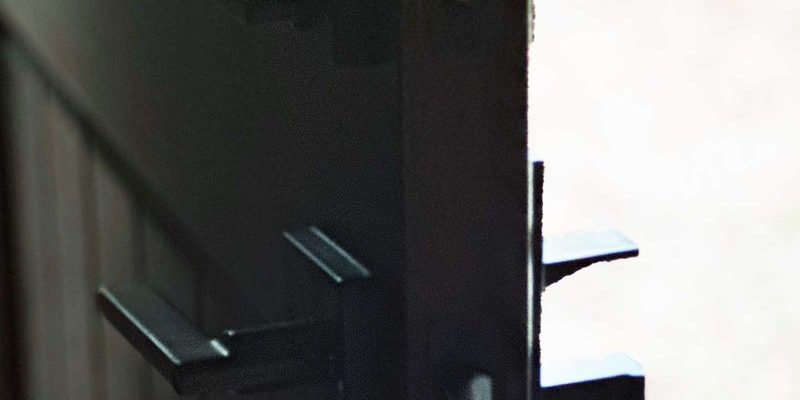
Here’s the thing: a door that doesn’t latch easily isn’t just annoying. It’s a security issue. It can also let in cold drafts, noise, and even water. Whether your door is a basic steel model, a classic wood entryway, or one of those fancy fiberglass options with a Schlage or Kwikset brand lock, the reasons it’s misbehaving are usually pretty similar—and, thankfully, so are the solutions. Let me explain what’s happening behind that stubborn click, and walk you through how to fix it.
What’s Really Happening When An Exterior Door Won’t Latch?
So, why does your exterior door need a push to latch? It all comes down to how the latch and strike plate interact. Think of the latch as the little hook or tongue that pops out from the edge of the door. Its job is to slide right into the matching hole in the strike plate (that metal rectangle on the door frame) and keep the door shut. When things aren’t lined up perfectly, the latch tongue hits the edge of the strike plate or doesn’t fully enter the hole. That’s when you have to give the door a nudge—sometimes gentle, sometimes a full-on shoulder bump.
A good latch should close with a light pull or push. If you need extra force, something’s out of sync. Sometimes, the *door frame* has shifted because the house settled, or because humidity’s swelling the wood. Other times, the lock mechanism is dirty, rusty, or gummed up with old paint. A bent hinge or sagging door causes just enough tilt for the latch to miss its mark. It’s like trying to plug a charger into a socket that’s slightly crooked—nothing feels right.
You might be thinking, “Isn’t this just normal wear and tear?” Kind of, but even a brand new Kwikset deadbolt or a Schlage smart lock won’t help if the physical alignment is off. The good news: most of these problems have pretty straightforward fixes, and you probably don’t need to call a locksmith or buy a whole new door set.
Checking the Alignment: Is the Latch Lining Up?
The very first thing to check is whether the latch is hitting the strike plate right in the middle like it’s supposed to. Let me walk you through a quick test. Close the door slowly and watch where the latch meets the plate. Does it line up and pop in almost effortlessly? Or does it whack into the metal, ride above or below the hole, or only engage if you push hard?
If the latch tongue is scraping the top or bottom edge of the strike plate, your door has probably shifted. This can happen with changes in weather, a house settling, or even after a new coat of paint. Sometimes, it’s the strike plate itself that’s a bit off-center—maybe it shifted after years of slamming, or loose screws allowed it to move.
Another sign? Look for shiny or worn spots on the strike plate. That’s where the latch is rubbing and struggling to make it inside. If it’s obvious that the latch is too high, too low, or not reaching far enough, that’s your problem right there. Addressing alignment right away often saves you a lot of frustration—and money—down the line.
Common Causes: Why Does Your Door Need a Hard Push?
Let’s break down the most usual culprits for this latching problem:
- Door Sag: Over time, heavy doors (especially wood or solid-core models) sag on their hinges. Even a few millimeters off can force the latch to hit the plate wrong.
- Loose Hinges: Screws work loose gradually. A wobbly hinge lets the door shift as it closes, and the latch can’t catch cleanly.
- Humidity & Swelling: Wood expands and contracts with seasons. In summer or after rain, a swollen door gets “sticky” and misaligned.
- Poor Installation: Sad to say, but not every door was installed perfectly. A slightly crooked frame or misdrilled holes can cause headaches from day one.
- Strike Plate Shift: Even just a wobbly strike plate—maybe someone overtightened or stripped a screw—can move things just enough to make latching a hassle.
You might be wondering about the lock itself. Usually, the lock brand (Yale, Schlage, Kwikset, etc.) doesn’t matter for this particular issue, unless the lock was installed poorly or the latch mechanism is sticking due to old grease or grime. If you’re using a universal remote deadbolt or a keyed entry, the physical door parts still have to line up.
Tools and Supplies for Basic Door Troubleshooting
Before you jump into repairs, you’ll want a few tools on hand. Grab a screwdriver (usually Phillips), a hammer, and possibly a drill with driver bits. A bit of masking tape is handy for marking trouble spots, and a small file can help if you need to widen the strike plate hole. For more stubborn doors, you might want some wood filler, longer screws, or even a new strike plate.
- Screwdriver (Phillips and flathead) – Most doors use these screw types for hinges and plates.
- Wood shims – Useful for temporarily adjusting hinge position.
- Drill and wood screws (2–3 inches) – To tighten up or relocate hardware.
- Metal file or small rasp – If you need to adjust the strike plate hole.
- Masking tape or a pencil – For marking where the latch actually hits.
Don’t feel like you need to buy a pro tool kit. Most everyday household tools will do the trick. If you find that something is completely worn out—like a cracked strike plate or a hinge that’s missing screws—those parts are cheap and easy to replace at any hardware store.
Step-by-Step Fixes for a Stubborn Door Latch
Let’s get right into how you can fix a door that won’t latch unless you push. Take your time, and don’t rush the steps—you want to solve the root issue, not just “sort of” fix it.
1. Tighten All Screws
Start with the basics. Open the door, and use your screwdriver to check every hinge screw—most problems come from a wobbly hinge. Also, check the strike plate on the frame; loose screws can shift its position.
2. Mark the Latch Position
With the door almost closed, use a bit of lipstick or a colored pencil on the latch tongue. Gently close the door until it touches the strike plate. Open the door and see where the color transferred—this tells you exactly where the latch is hitting.
3. Adjust the Strike Plate
If the latch is above or below the hole, unscrew the strike plate and move it up or down as needed. Sometimes, you’ll need to fill the old screw holes with wood filler for a tight fit. If the latch isn’t reaching far enough, you might file the strike plate hole a little wider. Go slow; too big a gap is almost as bad as too small.
4. Deal With Door Sag
If the top corner of the door drags or the door seems crooked, try tightening the top hinge screws further into the frame. If they’re stripped, replace them with longer screws that bite into the wall stud.
5. Lubricate the Latch
If the latch itself is just sticky, use a little spray lubricant (like silicone spray), working it into the latch while moving it back and forth.
If at any point you find that adjustments aren’t enough—or if your door’s actually warped—you may need a new door or professional help. But most doors respond really well to these basic steps.
How Weather and Humidity Affect Door Latching
You might notice your door getting stubborn during certain seasons—summer’s humid stickiness or winter’s dryness. That’s not your imagination. Wood soaks up moisture and expands, which can press the door edge against the frame and force you to push to latch it. On the flip side, super dry air can shrink the door, making hardware loose.
Here’s a little tip: If your door latches perfectly in winter but not in summer (or vice-versa), seasonal swelling is probably to blame. You can sand the door edge gently, but only as a last resort. Too much sanding, and you’ll end up with a drafty door later.
Storm doors and metal-clad doors sometimes flex or “oil can” with temperature changes, but these usually bounce back. Fiberglass models are a bit more stable. Still, no door is completely immune to the weather—so regular checks are key to a happy, easy-closing entry.
When To Repair vs. When To Replace Parts
Honestly, most latching issues can be fixed with a screwdriver and a little patience. But sometimes parts are just worn out. If your strike plate is deeply gouged, bent, or the screw holes are stripped beyond repair, it’s time to swap it for a new one. Same goes for a latch mechanism that sticks even after cleaning and a shot of lubricant. Thankfully, hardware like a Kwikset or Schlage passage latch costs just a few dollars and fits most doors.
If your door frame is cracked or the wood is rotten, quick fixes won’t last. That’s when it’s worth getting a pro in—or, if you’re handy, tackling a bigger project. Replacing a door or frame is a weekend job if you’re comfortable, but don’t be afraid to ask for help if it feels overwhelming.
Strong, well-aligned hardware keeps your home safer, warmer, and honestly, just easier to live in day-to-day.
Preventing Stubborn Door Latch Problems in the Future
Once your door latches smoothly again, a few simple habits can keep it that way. Here’s what helps:
- Tighten hardware once or twice a year. Doors get a lot of use—just like a bike or a car, screws eventually wiggle loose.
- Keep wood sealed or painted. Well-finished doors absorb less moisture from rain or humidity, so they’re less likely to swell up.
- Lube moving parts like the latch and hinges. A squirt of silicone spray every few months stops things from stiffening up.
- Check alignment after storms or big humidity swings. If it starts sticking again, you can fix it early—before you’re back to banging the door like it owes you money.
It’s a lot like maintaining a remote control for your garage or smart locks. A little care and troubleshooting goes a long way to keep things syncing and working right.
Wrapping Up: Enjoying a Trouble-Free Door
A door that needs a hard push to latch isn’t just a small annoyance—it’s a sign that something, somewhere, is a bit out of code. But fixing it doesn’t have to be intimidating. Whether you’re dealing with a classic wood door and a Schlage lock, or a more modern steel entryway, the troubleshooting steps stay the same: check the alignment, adjust the strike plate, tighten your hinges, and stay on top of maintenance.
Getting your door to click shut with a gentle pull means your home feels safe, energy-efficient, and just a little more welcoming. So, the next time you walk through your front door and it latches with a satisfying click, you’ll know you nailed the troubleshooting—and you won’t have to give it that extra shove ever again.
